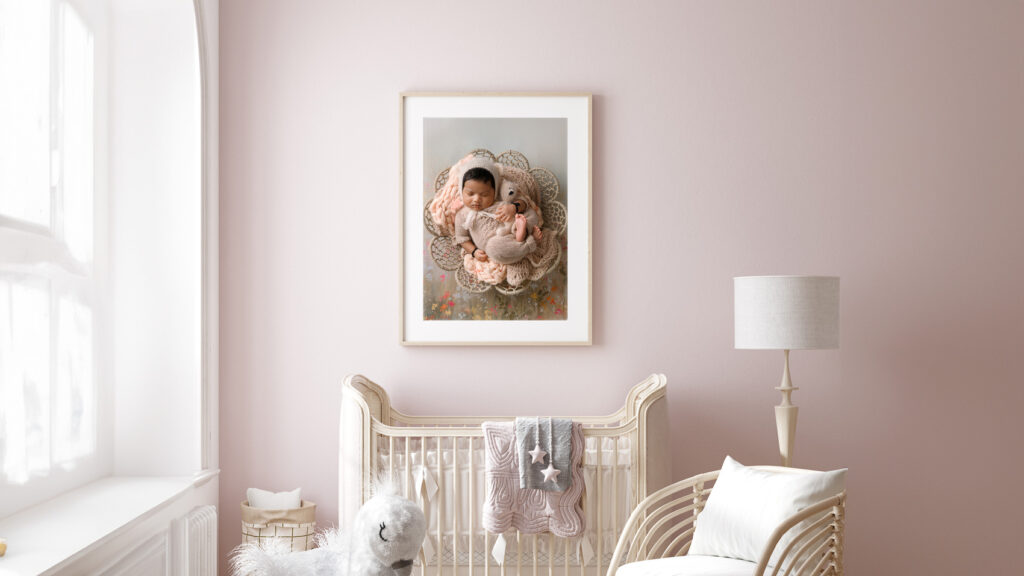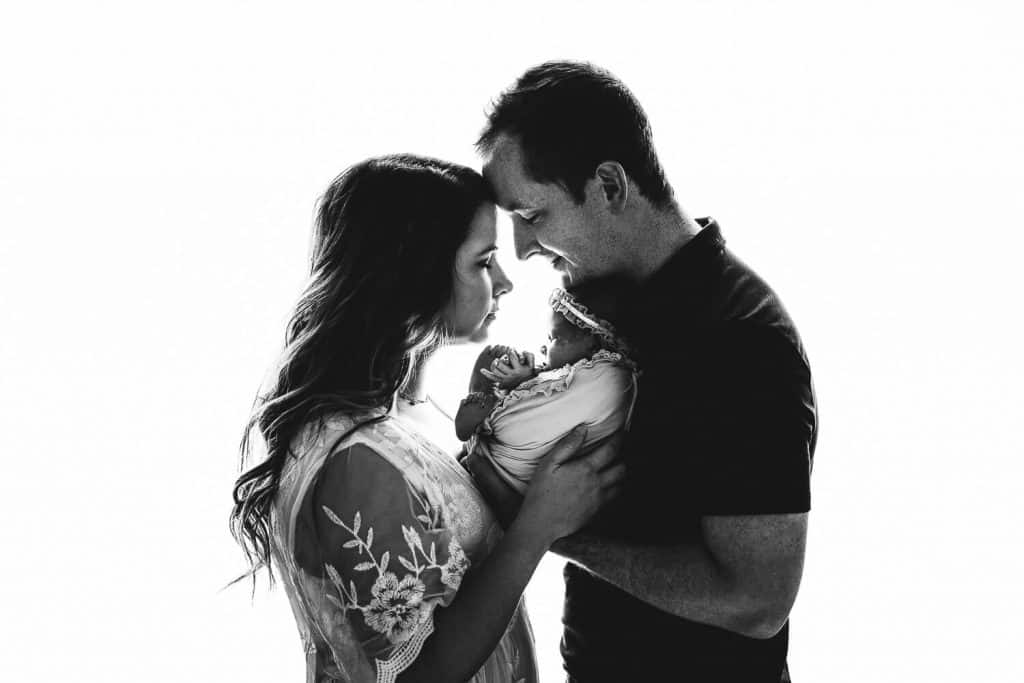Newborn Sleep Training: Tips for Better Rest for Newborn Sleep Training: Tips for Better Rest for Everyone
Bringing home a newborn is a life-changing experience, filled with love, excitement, and plenty of sleepless nights. One of the biggest challenges new parents face is newborn sleep training—establishing healthy sleep habits that work for both the baby and the family.
Understanding how your baby’s natural sleep cycle works can make all the difference in creating a peaceful, well-rested household. While it may seem overwhelming at first, the key is patience, consistency, and a gentle approach.
If you’re looking for guidance on helping your newborn sleep better, here’s everything you need to know about sleep patterns, gentle training techniques, and tips for creating a safe and soothing sleep environment.

Understanding Your Baby’s Sleep Patterns
Newborns sleep a lot—typically between 15 to 18 hours per day—but not all at once. Their sleep cycles are short and fragmented, with frequent wake-ups for feeding and comfort.
💤 Key Facts About Newborn Sleep:
✔ Newborns don’t distinguish between day and night yet.
✔ Sleep cycles are shorter than adults, lasting about 50-60 minutes.
✔ Babies wake frequently to eat since their stomachs are small.
✔ Most newborns start developing longer nighttime sleep stretches around 3-4 months.
Because newborn sleep training isn’t about strict schedules, the goal is to support natural sleep rhythms while gradually encouraging longer, more predictable sleep windows.
How to Establish Healthy Sleep Habits
1. Follow Your Baby’s Sleep Cues
Newborns will show subtle signs of sleepiness, such as:
- Rubbing their eyes
- Yawning
- Staring off
- Becoming fussy
Once you recognize these signs, try soothing them to sleep before they become overtired, making it easier for them to drift off.
2. Set a Gentle Sleep Schedule
While newborns won’t follow a strict routine, a flexible, predictable rhythm can help encourage longer sleep stretches over time.
A sample newborn sleep cycle may look like this:
- 🕖 7:00 AM – Wake up & feeding
- 🕘 9:00 AM – Morning nap
- 🕛 12:00 PM – Midday nap
- 🕞 3:30 PM – Afternoon nap
- 🕡 6:30 PM – Evening nap
- 🕘 9:00 PM – Bedtime routine
- ⏳ Nighttime sleep: Wakes every 2-4 hours for feeding
This general rhythm helps guide your baby’s internal clock, making transitions into structured sleep training easier in the future.
3. Daylight & Darkness: Teaching Day vs. Night
One of the best ways to encourage longer sleep at night is by reinforcing the difference between daytime and nighttime.
☀ During the Day:
- Keep rooms bright and active.
- Engage in play, tummy time, and interaction.
- Allow naps to happen in naturally lit rooms.
🌙 At Night:
- Use dim lights and soft sounds.
- Keep interactions calm and quiet.
- Avoid stimulating activities during nighttime feedings.
By naturally reinforcing light exposure patterns, babies adjust to longer nighttime sleep periods faster.
Newborn Sleep Training: When & How to Start
While strict sleep training isn’t recommended for newborns, you can introduce gentle sleep habits from the start to help your baby self-soothe and sleep more consistently.
1. Start with a Consistent Bedtime Routine
Babies thrive on predictability—a simple bedtime routine can signal when it’s time to wind down.
A great pre-sleep routine might include:
- 🛁 A warm bath
- 📖 A gentle story or lullaby
- 🍼 A feeding session
- 🤱 Cuddles & rocking
Over time, this consistent routine helps babies understand when it’s time to sleep.
2. Encourage Self-Soothing
Helping babies learn to fall asleep independently is a key part of newborn sleep training. While you don’t need to let your newborn “cry it out,” you can gently encourage self-soothing behaviors.
- 🍼 Try feeding before sleep, but not to sleep.
- 🤱 Put baby down drowsy but awake, allowing them to drift off naturally.
- 👐 Offer gentle reassurance if they stir, instead of immediately picking up.
This early approach can help babies feel secure while developing natural sleep rhythms.
Pro Tip from a Mother of Three and a Newborn Photographer
One of the best tricks for soothing your newborn to sleep is using a swaddle with a zipper or Velcro—no struggling with loose blankets that come undone! Swaddling provides the snug, womb-like comfort that babies love, helping them feel secure and calm.
Next, turn on a white noise machine—loud! Babies are used to constant whooshing sounds in the womb, so white noise mimics that familiar environment, making it easier for them to settle.
Want even more success? Try a pacifier. Many babies have a natural sucking reflex that helps them self-soothe. When combined with swaddling and white noise, it’s the ultimate sleep training trifecta.
Thank me later at your newborn session! 😉
For a full list of baby essentials, including the white noise machine and Velcro swaddle we use both in our studio and at home, check out THIS PAGE!
Creating a Safe Sleep Environment
Safety is just as important as sleep quality. To reduce the risk of Sudden Infant Death Syndrome (SIDS), follow these guidelines:
✔ Always place your baby on their back for sleep.
✔ Use a firm crib mattress—no pillows, blankets, or stuffed animals.
✔ Share a room, not a bed—the AAP recommends infants sleep in the parent’s room for the first 6-12 months.
✔ Keep the room at a comfortable temperature—between 68-72°F.
For more official guidelines on safe infant sleep practices, visit The Sleep Foundation.
Final Thoughts on Newborn Sleep Training
Every baby is unique, and newborn sleep training should be a flexible, supportive process. Rather than focusing on strict rules, start with gentle habits that encourage independent sleep, while ensuring your baby feels safe and nurtured.
By reinforcing day vs. night cycles, creating a soothing bedtime routine, and following safe sleep practices, you can help your baby (and yourself!) get more restful nights.

READY TO
CONNECT?
Attention Austin parents-to-be! Whether you’re eagerly awaiting the arrival of your little one or cherishing those precious first moments, a maternity or newborn photoshoot is a timeless investment in capturing your family’s story.
As your Austin-based newborn photographer, I invite you to embrace this magical experience. These photos will be more than just images—they’ll be cherished memories, a testament to the love and joy that fills your home.
Schedule a consultation with me, and let’s create timeless images that tell your unique baby`s story.





